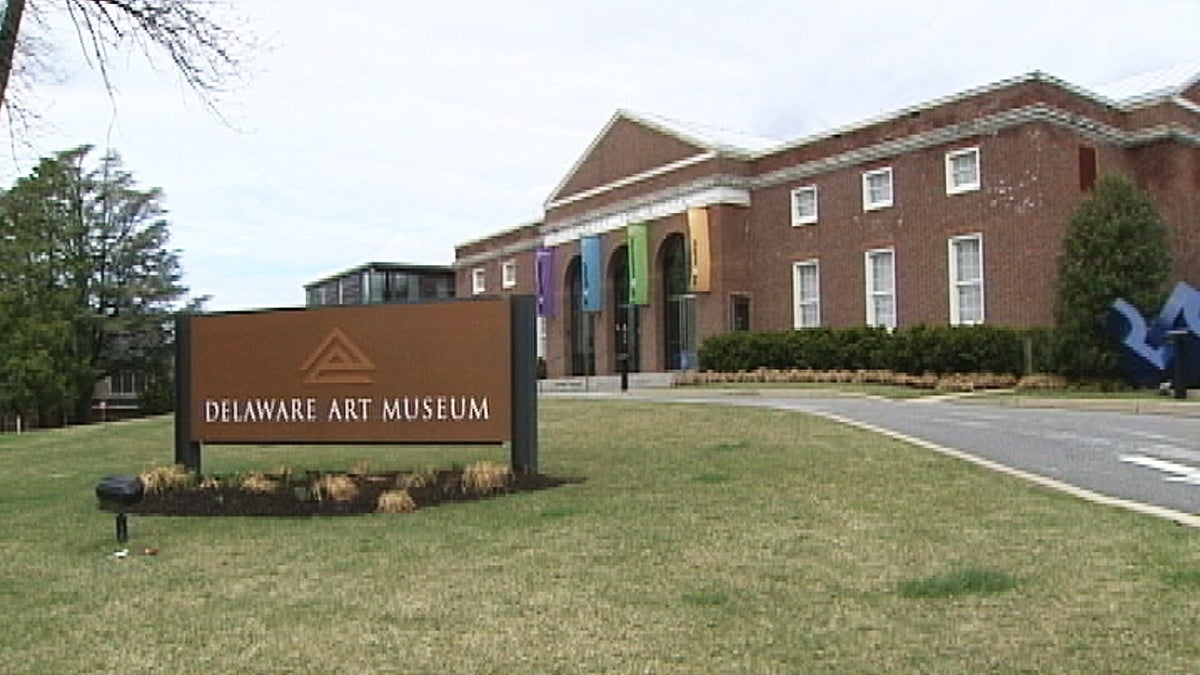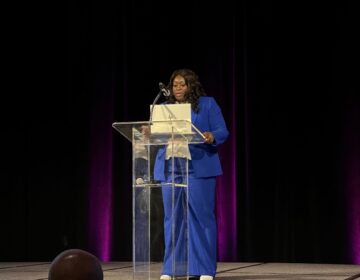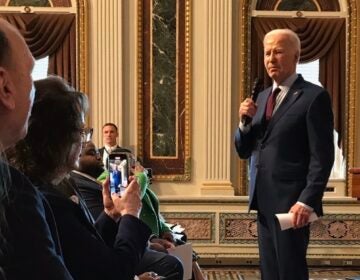Stewardship and the Delaware Art Museum [video]

(file/NewsWorks)
To save itself from liquidation, the Delaware Art Museum announced last month that it would sell up to four works of art from its 12,000 piece collection.
The proceeds will satisfy a $19.8 million debt stemming from a $24.8 million building campaign launched approximately 10 years ago. Last year, Wells Fargo notified the museum’s board of trustees that it was not going to renew its letter of credit, a move that requires the museum to pay off the balance in full by this fall.
Board President Elva Ferrari-Graham defended the board’s decision and described it as a last resort.
“Part of our stewardship, I think, as trustees, is to maintain the museum and to preserve the art. And we can’t preserve the art and maintain the museum as a resource for the community unless we have a museum,” she said.
Museum officials said they would not sell any gifts or works of art willed to it, but are tight-lipped about what works will be sold over the next several months. CEO Mike Miller explained that the secrecy protects potential buyers.
“There are some buyers that we’re concerned about that will … leave this market if there’s a big controversy surrounding it,” Miller said. “We’re just trying to manage the process and maximize the value.”
The board of trustees hope to earn $30 million from the sale, which allows the museum to pay off the debt and add about $10 million to its endowment.
Miller said $25 million is in the endowment at present. As endowments generate earnings, he said that museums typically use that earned interest to support operations.
Museum officials considered using the endowment to pay off the debt, but realized that operating costs would burn through what’s left, leaving the museum no better off.
“Our donations from individuals and corporations and from the work that we do inside here are not sufficient to fund all of the expenses, so we have to rely on the endowment,” Miller said.
Matter of principle
As president of the Association of Art Museum Directors, Philadelphia Museum of Art CEO Timothy Rub said that more could and should have been done to protect the collection.
“We as professional staff and trustees have an obligation to care for that collection and preserve it, as much as we have an obligation to maintain the financial stability of our institutions,” Rub said.
The AAMD is an organization that acts as a governing body for its membership. One of their core principles is protecting collections.
“If a Homer leaves, if a Wyeth leaves, if what have you goes, it’s gone,” Rub said. “And chances are, it, or something of that quality will never ever come back to the museum and to the community again.”
Miller is not a member of the board and was not a part of the decision process. Rub said if he were the head of the Delaware Art Museum, he would have fought tooth-and-nail against the trustees’ decision and would have argued vigorously to keep the collection intact.
While the AAMD doesn’t have police powers, it can sanction museums that operate contrary to the ethical standards and best practices established by the organization. When a museum is sanctioned, the AAMD encourages its members not to loan or organize exhibitions with that museum.
Miller said the museum is prepared for any and all consequences, including the loss of its accreditation from the American Alliance of Museums. However, Miller said that exceptions should be made if a museum is facing closure.
“Our community is the public, and we can’t see how we’re maintaining their trust by putting the museum at risk by shutting down,” Miller said. “There are other museums that are struggling like we are and I think the AAMD has to find a way to help us.”
In response, Rub observed that the American Folk Art Museum in New York and the Detroit Institute of the Arts Museum were under similar or worse financial strain but did not compromise their collections.
Not going public
Members from the Delaware Art Museum and the AAMD met in January to discuss alternatives. Ferrari-Graham said the board followed up on the AAMD’s suggestions, but nothing panned out.
“We considered refinancing the debt … we had already reduced … operating expenses of the museum substantially, we had cut staff … At that point we were really faced with a dilemma, with the only thing we could do, which was to try to sell a couple of pieces of art to satisfy the debt,” Ferrari-Graham said.
The news of the museum’s financial troubles came as a surprise to many in Delaware, including Rub.
“Everyone knew that the Delaware Art Museum was having some financial troubles, but there’s a big distance between understanding that and hearing the news one day that to solve this problem, you’re actually going to sell works from the collection,” Rub said.
Rub wished that the museum had asked the public for help or had called upon state lawmakers to put pressure on Wells Fargo to renew the letter of credit.
“Say here’s an issue that we’ve struggled with, we believe there’s great value to the community in this museum, we believe that having a public conversation about this can help, perhaps it can galvanize action to support the financial rescue of the museum,” he said.
“We’d contacted our legislators, we’d contacted people in government, local government, they were all aware,” Ferrari-Graham countered. “We’re constantly contacting our donors and speaking with foundations who have normally supported us and we were told by everyone that we had to simply get this debt taken care of.”
Miller indicated that there were other potential impacts when seeking public donations.
“Donors have told us … if you are in trouble, nonprofits have financial issues, people don’t like to give to those nonprofits. So I think we would quickly spiral,” he said.
Slippery slope
Besides violating a fundamental principle of the museum community, Rub warned that the decision to monetize art begins museums down a slippery slope.
“What if the next time a financial crisis or problem occurs at a museum like the Delaware Art Museum or another institution, is it an easy and convenient thing to sell another work of art to solve that problem?” Rub asked. “Eventually, one can imagine instances where a collection would be cannibalized.”
Randolph College in Lynchburg, VA reportedly slipped down that slope on two separate occasions. According to a statement published on the AAMD’s website, the college sold a painting from its Maier Museum of Art in 2008 to make up for a shortfall in operating expenses. The AAMD censured the school, which amounts to a slap on the wrist.
The AAMD said it then went one step further last month, when the sanctions described above were applied to the Maier Museum for selling another work of art in February to cover operating expenses.
Brenda Edson, director of college relations, said Randolph did not make multiple decisions to sell art to cover operating expenses.
“The college made one decision in 2007 to sell four pieces of art from our collection,” Edson stated in an email. “The market then crashed, and we had to wait until it was in the best interests of the college to proceed with the sales. One painting was sold in 2008. A second was sold in February.”
Edson also contradicted the AAMD regarding the proceeds from the sale. She said the money was put into the college’s endowment and not used for “operating funds,” as the AAMD stated.
Miller insisted that the Delaware Art Museum would be on good financial footing after the sale, but acknowledged that the museum needs both continued fundraising and people coming through its doors.
The Delaware Art Museum reported that no works of art were sold yet. While remote, Miller said that there is still a possibility that museum leaders could reverse their decision.
WHYY-TV looks into the museum’s controversial decision and the potential consequences on First, Friday night at 5:30 p.m. and again at 11 p.m.
WHYY is your source for fact-based, in-depth journalism and information. As a nonprofit organization, we rely on financial support from readers like you. Please give today.





